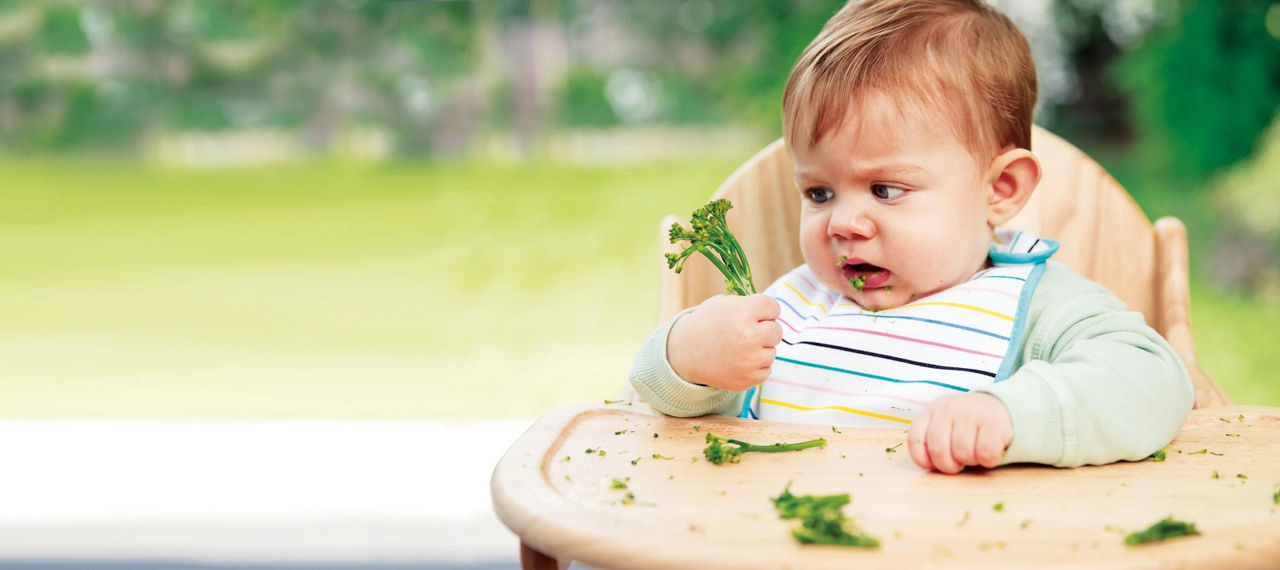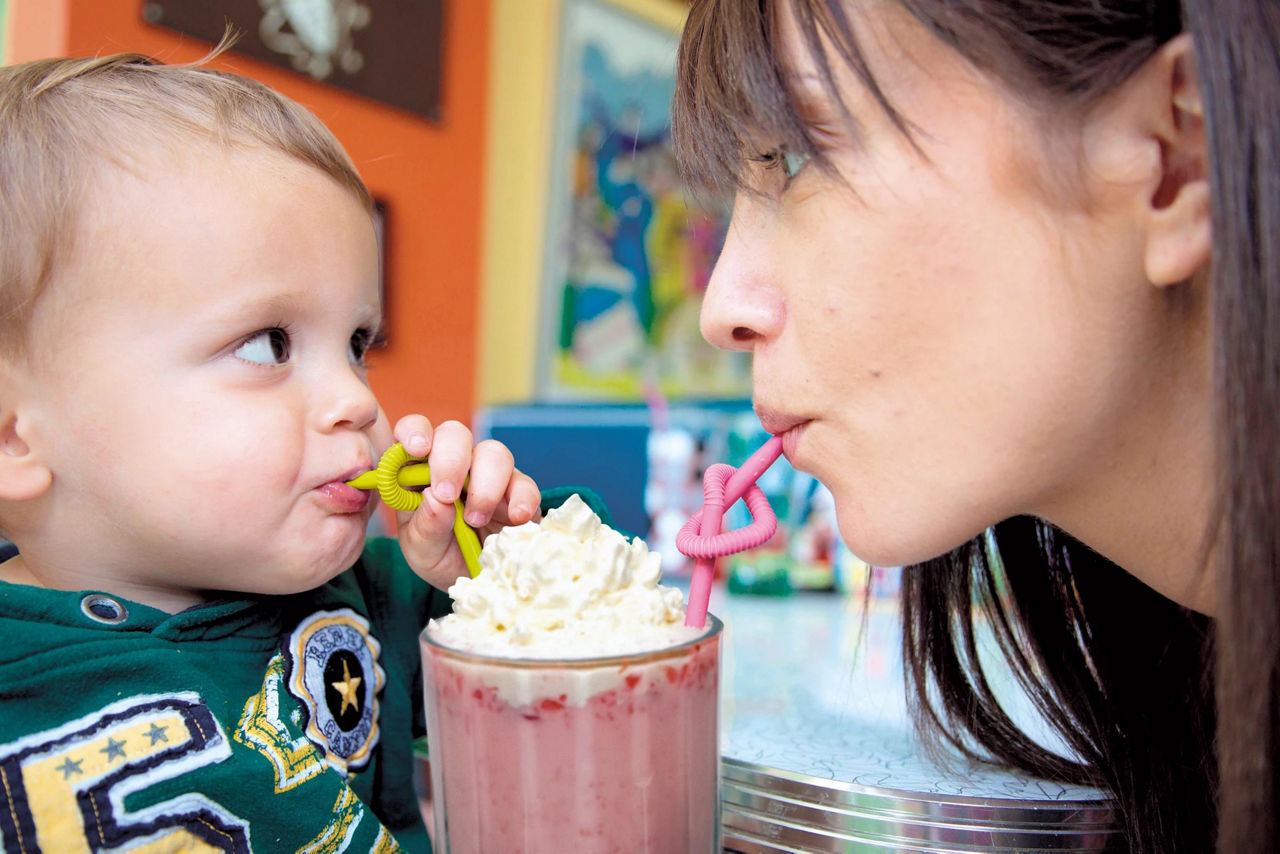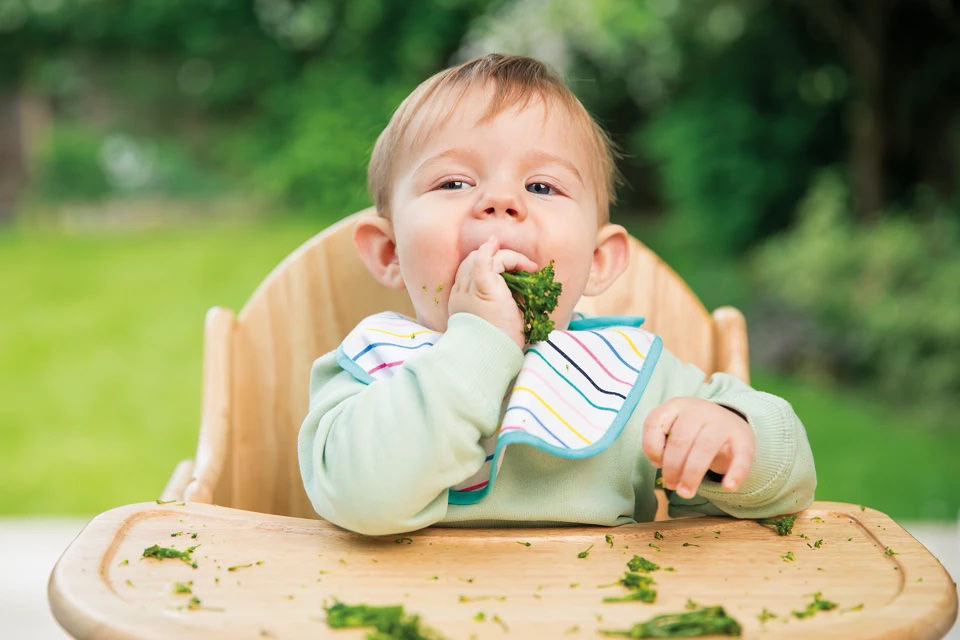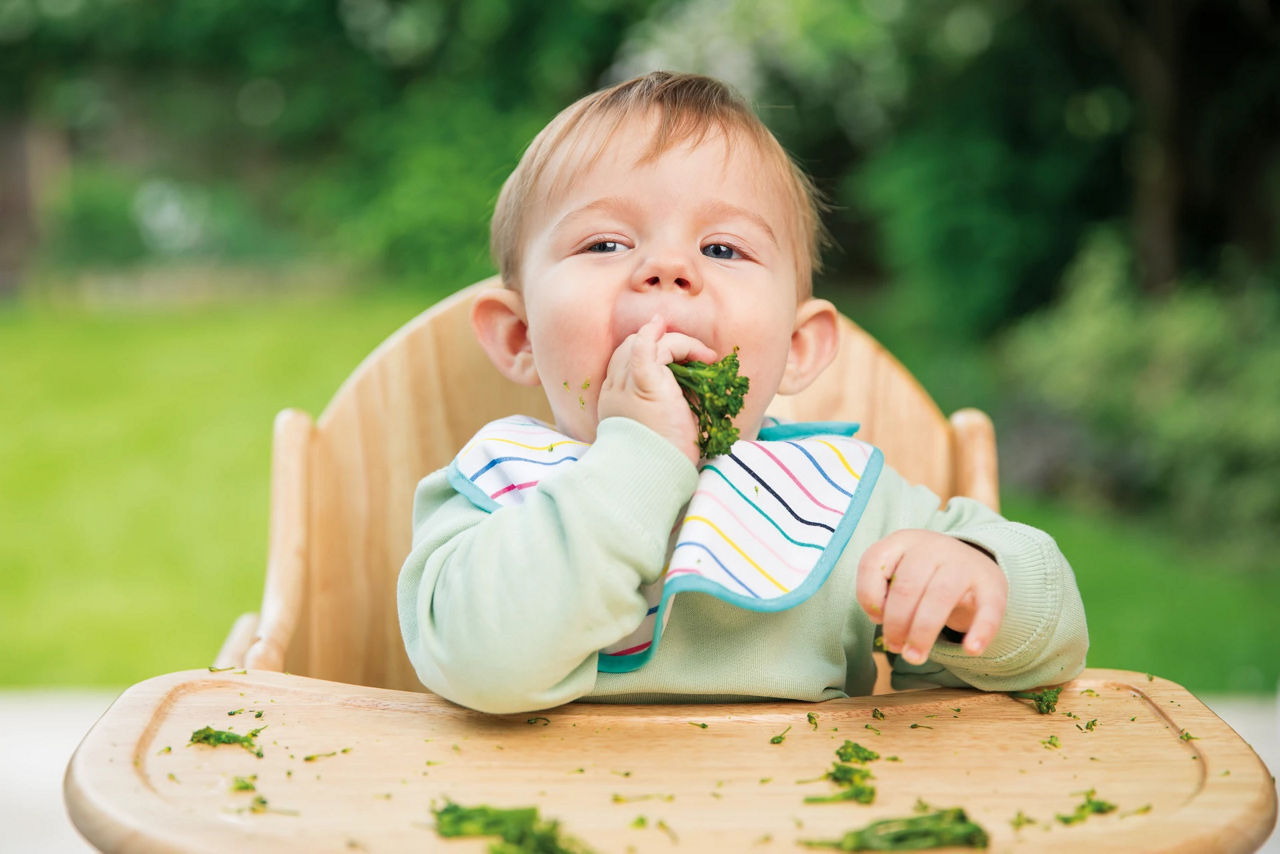Free weaning plan - Register here
Tips on managing fussy eating habits from C&G baby club; including how to get toddlers to eat veggies.
Fussy eating is a common behaviour among babies and toddlers. If you are worried that your toddler is a fussy eater, then be reassured that up to half of children experience picky eating at some point in their life.
The good news is that by employing highly effective strategies for picky eaters, babies and toddlers will learn to eat a wide range of foods.
In this article, we’ll cover what is fussy eating, an insight into some of these strategies for picky eaters and how to help toddlers learn to try new foods.
Picky eater meaning
Picky eating means that babies and toddlers may refuse both familiar and unfamiliar foods.
In the early years, this is often referred to as neophobia.
Neophobia starts anytime from 12 - 18 months of age and can persist into early childhood.
This is a developmental stage, whereby babies and toddlers hold a real fear of trying new foods.
For this reason, it’s important to avoid pressuring your child to eat foods that they are not ready to.
Instead, wait for them to become developmentally ready to do so.

What causes toddlers to become fussy eaters?
Your baby is more likely to experience picky eating if they:
- Experience early feeding difficulties,
- Experience delayed introduction of lumpy solids during the weaning stage,
- Or have persistent pressure to eat when parents worry that children are not eating enough to grow.
No matter how worried you are, remember that fussy eating is a phase that won’t persist when addressed appropriately.
Even if there are foods that picky eaters don't like to try, here are some tips to help you as a parent manage picky eating easily.
Is my toddler a fussy eater?
Your toddler is a fussy eater if they show strong food preferences and sensitivity to food texture, appearance or smell.
It’s normal to be worried about this picky eating phase but when appropriately tackled, this phase will be transient.
Most common foods fussy eaters don’t like
Children who are fussy eaters might show a preference for salty or sweet foods over bitter-tasting foods.
So introducing bitter, sour and umami flavours during the weaning process can help babies develop familiarity with a wider variety of foods.
With repeated exposure to foods like vegetables and savoury foods, babies and toddlers will learn to expand the repertoire of foods they eat confidently.
My toddler won’t eat anything but fruit
Toddlers may have a natural preference for sweeter flavours because they are born with mature sweet taste buds.
It’s an evolutionary survival mechanism to ensure that they choose breastmilk for feeding when born.
The bitter and umami taste buds are not mature yet so repeated exposure to vegetables can help them learn to like these flavours.
Whilst they learn to enjoy the ‘bitter’ flavours of vegetables, you can help them by pairing sweeter foods like fruit with similar coloured and textured vegetables to expand their palette.
Learn more about toddler taste buds.
How to deal with fussy eaters?
One of the best ways of helping a fussy-eating toddler is to keep offering a variety of foods even when these are consistently refused.
An effective way of doing this is by only serving family meals.
Seated family meals can be an excellent way to role model how to eat different textured food and flavours.
Showing toddlers how to behave around complex textures like wet textures, dry foods, finger foods, vegetables and fruit can help them become brave to try new foods.
Although it sounds simple, this strategy is influential as babies and toddlers love to mimic the behaviour of those around them.
Just remember to offer achievable and age-appropriate portion sizes and limit mealtimes to 20-30 minutes.
How to get a toddler to eat veggies?
If you want to see your toddler eat veggies then include them regularly in family meals.
Make sure that you are also eating the same meals as your toddler.
Large chunks of vegetables can be off-putting for toddlers.
Make meals less complex for toddlers by chopping vegetables on their plates into smaller pieces so it's easier for fussy eaters to manage.
The food should be small enough for them to pick up easily using their hands or a fork or spoon to promote self-feeding.
Serve small portions, to begin with. You can offer more food if they are hungry.
Are kid-friendly meals for picky eaters necessary?
You don’t have to prepare separate toddler meals for picky eaters.
Toddlers are still mastering how to chew and try new textures and flavours.
So they’ll need time to practise eating complex textured foods like meat.
Whilst your toddler is learning to master their feeding skills, use a pressure cooker or extend cooking times so that tougher foods like meat are soft to eat.
My toddler eats the same thing every day - what can I do?
A daily meal plan offering three main meals and 2-3 snacks will help regulate your child’s appetite.
A family meal plan will vary their intake and gently expose them to a variety of foods so they don’t eat the same foods every day.
Here are a few top tips for balanced meals for toddlers:
- Use starchy carbohydrates as the base for meals e.g. bread, pasta, rice, potato
- Add protein e.g. lentils, beans, fish, eggs, cheese, lean meat or chicken
- Plus a serving of dairy e.g. cow’s milk or calcium-fortified plant drink, cheese or yoghurt
- 1-2 different vegetables
- Fruit to finish
Building kid-friendly meals for picky eaters
- Pasta in a tomato sauce with grated cheese, peas and carrots
- Dhal (lentil dish) cooked with tomatoes and spinach, served on a bed of rice with a glass of milk
- Oven-baked fish with courgettes and green beans over couscous and a serving of natural yoghurt with chopped fruit
Learn more about building balanced meals in healthy eating for toddlers.
Summary
Fussy eating is a common but transient phase that many toddlers undergo.
Parent role modelling during seated family meals is one highly effective strategy for preventing and managing picky eating. Avoid pressuring your child to try new foods.
Instead, wait for them to become confident and developmentally ready to accept new tastes and flavours by using our key picky eating tips described above.
Last reviewed: 15th December 2022
Reviewed by Nutricia's Medical and Scientific Affairs Team

Join our baby club
Ready to stop worrying about what other people think and do what feels right to you? We’ll give you the support you need to follow your instincts and enjoy parenthood to the max:
Helpful emails
Non-judgemental support
Free weaning plan
Tips from real parents
Related content
Toddler topics
Need free advice with a smile? Get in touch with our dedicated Care team.
Ask us a question (8am - 8pm Monday to Friday, 10am - 4pm Weekends)
Messenger
Contact us on Facebook (10am - 10pm, 7 days a week)
Call us
Call us on 0800 977 8880 (8am - 8pm Monday to Friday)
FAQs
Get answers to your most frequently asked questions






